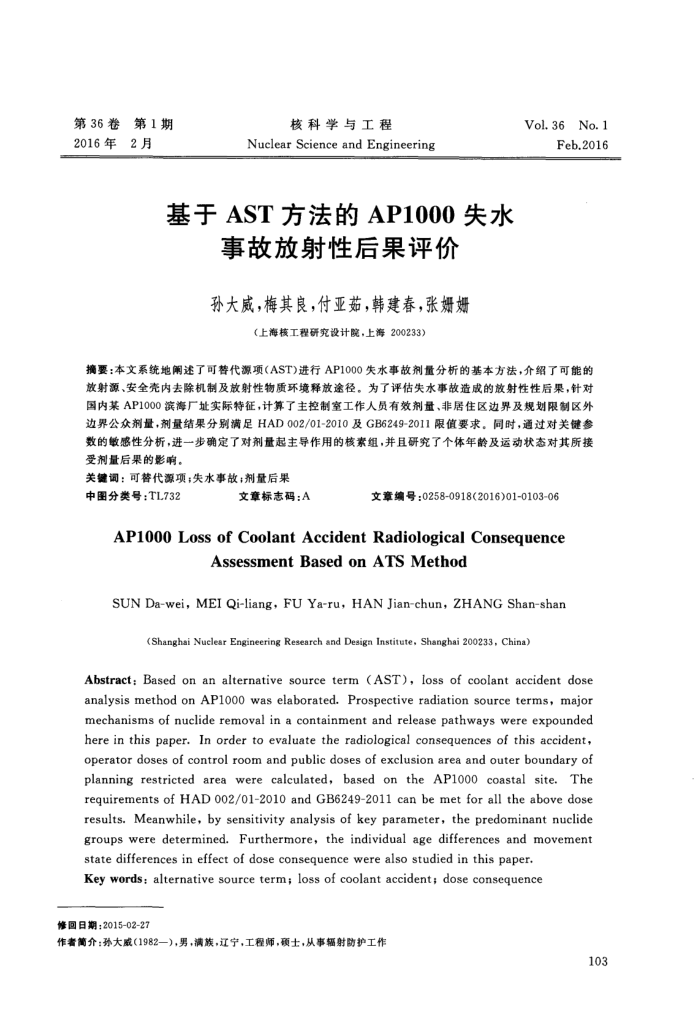基于AST方法的AP1000失水事故放射性后果评价
内容简介
 第36卷
第36卷第1期
2016年2月
核科学与工程
Nuclear Science and Engineering
基于AST方法的AP1000失水
事故放射性后果评价孙大威,梅其良,付亚茹,韩建春,张妍姆
(上海核工程研究设计院,上海200233)
Vol.36No.1
Feb.2016
摘要:本文系统地阐述了可替代源项(AST)进行AP1000失水事故剂量分析的基本方法,介绍了可能的放射源、安全壳内去除机制及放射性物质环境释放途径。为了评估失水事故造成的放射性性后果,针对国内某AP1000滨海厂址实际特征,计算了主控制室工作人员有效剂量、非居住区边界及规划限制区外边界公众剂量,剂量结果分别满足HAD002/01-2010及GB6249-2011限值要求。同时,通过对关键参数的敏感性分析,进一步确定了对剂量起主导作用的核素索组,并且研究了个体年龄及运动状态对其所接受剂量后果的影响。
关键调:可替代源项;失水事故;剂量后果
中图分类号:TL732
文章标志码:A
文章编号:0258-0918(2016)01-0103-06
APioooLossofCoolantAccidentRadiologicalConsequence
AssessmentBasedonATSMethod
SUN Da-wei, MEI Qi-liang, FU Ya-ru, HAN Jian-chun, ZHANG Shan-shan
(Shanghai Nuclear Engineering Research and Design Institute, Shanghai 200233, China)
Abstract: Based on an alternative source term (AST), loss of coolant accident dose analysis method on AP1ooo was elaborated. Prospective radiation source terms, major mechanisms of nuclide removal in a containment and release pathways were expounded here in this paper. In order to evaluate the radiological consequences of this accident, operator doses of control room and public doses of exclusion area and outer boundary of planning restricted area were calculated, based on the AP1oo0 coastal site. The requirements of HAD 002/01-2010 and GB6249-2011 can be met for all the above dose results. Meanwhile, by sensitivity analysis of key parameter, the predominant nuclide groups were determined. Furthermore, the individual age differences and movement
state differences in effect of dose consequence were also studied in this paper. Key words: alternative source term; loss of coolant accident; dose consequence
修回日期:2015-02-27
作者简介:孙大威(1982一),男,满族,辽宁,工程师,硕士,从事辐射防护工作
103